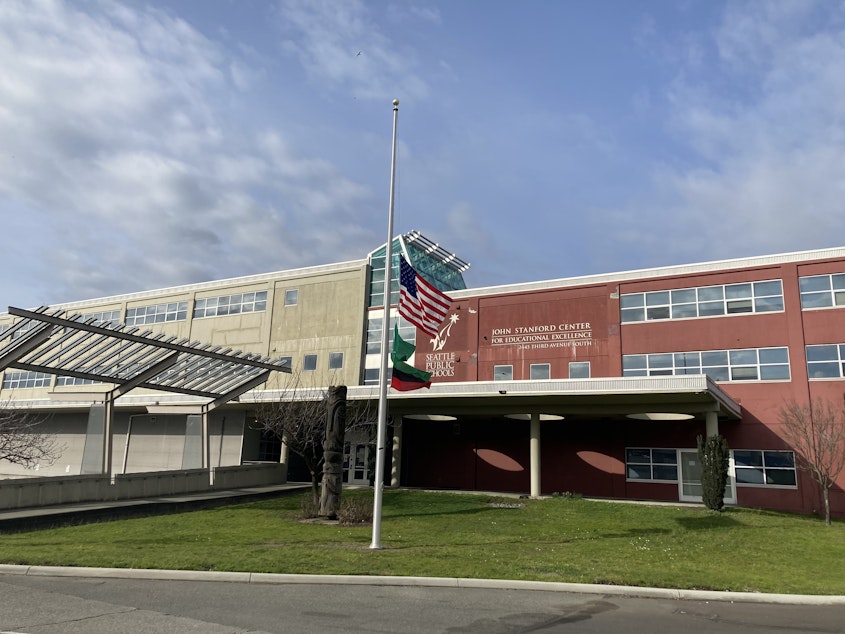Why are so many Seattle-area students of color staying home?

Thousands of Seattle students are back in classrooms after schools reopened for in-person learning this spring, but many families of color have not sent their kids back.
Seattle Public Schools hasn't released the exact number of students who have returned, but earlier parent surveys suggested white families were nearly twice as likely as Black families to want to send their children back.
KUOW education reporter Ann Dornfeld told Kim Malcolm that racism at school is one big reason why many kids of color are staying home.
This interview has been edited for clarity.
Ann Dornfeld: Especially given the recent rise in anti-Asian racist incidents across the country during the pandemic, as well as locally, many parents have said that they really don't feel confident that their kids are going to be safe at school or feel safe at school emotionally or physically. That's true in Seattle and around Seattle. I spoke to Kaley Duong, a junior at Meadowdale High School in Lynwood:
“As someone who is Asian American, I'm not going back to school, but I see people are literally getting hate-crimed in my community for COVID itself, and being blamed for this pandemic.”
Families have expressed that to school leaders and teachers I spoke to. They've asked to know how schools can protect their kids at a time like this. Of course, kids can never be truly safe from racist incidents. Even where schools are working hard on anti-racist lessons for students, a lot of families just feel better keeping their kids home right now, especially Asian families.
Kim Malcolm: As you’ve been reporting, these concerns echo long-running issues that you've been hearing from other BIPOC families.
Sponsored
Right. I spoke to Eric Anthony Sousa Ponce. He attends Ballard High School. He's a leader of the school's Students and Teachers Against Racism coalition. Ballard is a mostly white school. He said there are serious issues with the school climate for BIPOC students like him:
“We conducted a study a few weeks ago to survey the school environments. We found almost 85% of students of color do not feel safe in school. So, I can absolutely understand why students of color are in no rush to go back to an unsafe environment.”
Seattle School Board member Brandon Hersey, who is Black, represents southeast Seattle, which is home to a large percentage of the district's Black students. He told me that while a lot of Black families have been eager to return to buildings, for others, their kids have found remote learning to be a respite from the emotional or physical abuse they can face at school, or just fear at school:
“What we're seeing is that when students can show up to their learning environment without that pressure, without the fear of violence, whether it be physically or emotionally, a lot of our students are thriving in those environments. So, many of our Black families are asking the question, what am I sending my child back to? Right? And a lot of families are saying no.”
Many immigrant families faced enormous challenges during this pandemic. I'm thinking of Latino families who have often been disproportionately affected by Covid-19. What are you hearing from them about how they're approaching in-person learning?
Sponsored
I spoke with Peggy Hernandez with the Lake City Collective. That's an organization that advocates for immigrant communities in North Seattle. She told me that so many parents in the Latino families she works with usually work in the service industry, and they've been out of work due to the pandemic.
These are parents who are already home with their kids due to job loss. They don't have the pressure to return to work because they don't have jobs to go back to in so many cases. She said that for so many families like them, the prospect of risking Covid by sending their kids to school in person is terrifying:
“They don't know if the kids go back to school they are going to bring the Covid home, and they don't have medical insurance. Who will take care of the kids if the parents get sick and die?”
She's heard from so many families in the Latino community who have experienced Covid, either someone close to them or even themselves. Sometimes they've been infected multiple times. It’s very close to home and the risks are omnipresent.
There are a lot of families choosing to keep their kids at home. For many other families, they really didn't have a choice because they didn't have a way to actually physically transport their kids to or from school.
Sponsored
That's true. A lack of bus drivers due to pandemic layoffs at the district's transportation contractor First Student means that the district is not offering transportation to school to most kids. A lot of students have no way to get there, especially if they are low-income.
Because low-income students are disproportionately students of color, that means that along with the many BIPOC families who are not ready to send their kids back to school, there are so many who would love to but have no way to make it happen.
Listen to the interview by clicking the play button above.





